Amatololo means ‘the wilderness’ in the local Bemba language and I cannot imagine a more fitting name for this new tourism route in North Luangwa National Park. By Johann Groenewald
The Amatololo Experience opens up the eastern boundary of North Luangwa National Park as you track along the Lufila and Luangwa rivers. Four new wilderness camps dot the route and you can be assured of remote bush camping with only the animals as your neighbours.
I got to experience the Amatololo following my annual trek from Paarl to Lusaka to take part in the Elephant Charge. [Johann was navigator for Team Autoworld, the 2022 Elephant Charge winners! – T4A] After the event, my good friend David Findlay and I set off to map new routes in North Luangwa National Park. I stayed at Luangwa Bridge Camp while David took his family back to Lusaka. I am happy to report that the camp is now owned and managed by a Zambian lady who is dedicating all her time and effort to restoring this old camp. The position of Bridge Camp is very convenient for travellers along the Great East Road. However, the previous owner neglected the camp to the point that people started to avoid it. Now the food is great and the showers are hot again.
Your gateway to North Luangwa
After reuniting with David, our first overnight stop was at the lovely Zikomo Camp. This is just outside the Nsefu Sector of South Luangwa National Park. Zikomo’s campsite is on the river and in the middle of nowhere. It is just a pity that they try to squeeze so many campers into a very small area. The ablutions are rustic but very good and there is plenty of shade under the large trees. Game drives can start in the camp and the Milyoti park gate is a mere 3km away.
The next day we drove to North Luangwa National Park. The route via Nsefu Sector and the Luambe National Park will keep you busy all day before you reach the new Ituba Community Camp. This is one of two new community camps situated just outside the south and north gates of North Luangwa NP. At the south gate, you will find Ituba; at the north gate, Samala. Both these camps have a couple of self-catering tented chalets as well as a wonderful campground. The prices are very reasonable and we were immensely impressed with the facilities on offer. Staff were on standby with a friendly smile and helping hand.
We were kindly upgraded to the tented chalets, courtesy of Robinson, who is currently in charge of tourism initiatives for the park. He is also the man behind all the wonderful infrastructure. Over dinner we learned why he got what he built for the camps so spot on. It turns out he is a seasoned tour guide who has worked all over Southern Africa and he has seen the good, the bad and the ugly.
Also read: Self-driving North Luangwa National Park
Three new wilderness camps
Our mission for the next two days was twofold. Firstly, to drive all the new tracks on the eastern side of the park. Secondly, to check in at each of the new wilderness campsites established along the Amatololo Route. The first order of business was getting across the Luangwa River. The pontoon is in use at this time of the year and its position has shifted many times. The latest maps will indicate the latest position. The road from the pontoon into the park has been gravelled to form an all-weather track so we expect the pontoon’s position to remain more or less in the same place. I was using my new Bushlapa trailer for this trip and it had to be sent across the river on its own. So take note that if you are towing, the crossing could take quite a while, but it is doable!

After the eventful pontoon crossing, there was some deep sand before reaching the northern bank of the river. We headed in an easterly direction on the Chimana Loop. Along this stretch of the Luangwa River, three new wilderness camps have been established. The camps are spread more than 5km apart to ensure that you have your own little paradise to yourself.
In order from west to east, the three camps are Mushika, Muzungwe and Nkholo camps. Nkholo is roughly 25km away from the current pontoon crossing, which puts all three camps within easy reach of the southern gate.
All three of these camps are on the bank of the Luangwa River under some beautiful trees. The clearing for each camp is large and would be able to accommodate several vehicles. The facilities include a single long drop toilet as well as a hand pump for water. We think it’s perfect!
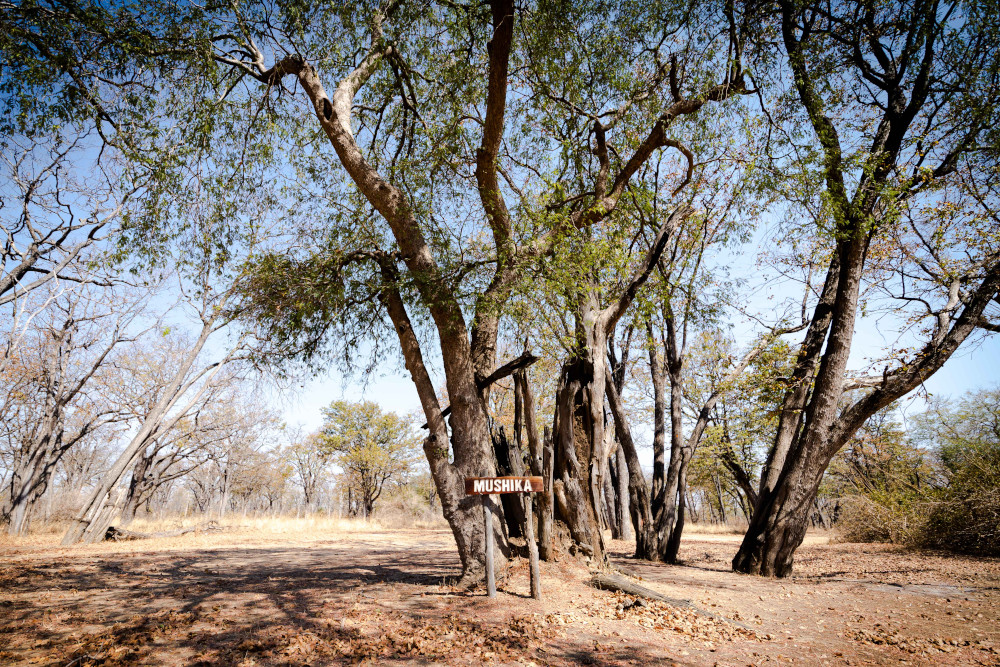
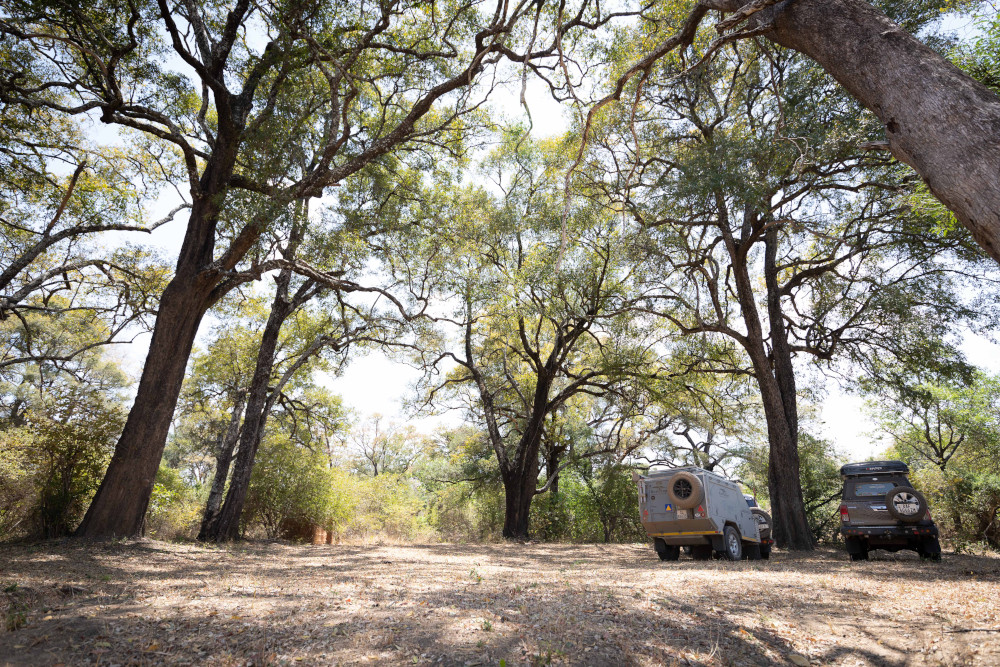
Wildlife sightings in North Luangwa
The park has thick vegetation, so do not expect to have the same game viewing experience as in South Luangwa. The river will attract animals and you may come across wildlife by chance. When we were there, the river level was quite low and the hippos were concentrated in large groups. I would suggest that you put your chair out on the river bank and just soak in the wilderness and see what comes down to drink.
Animals that you could expect to see in the park include elephant, hippo, buffalo, impala, kudu, lion, leopard, wild dog, wildebeest and zebra. Obviously there are many more smaller creatures and camping in the wilderness may just afford you the luxury of coming across these by chance.

Tackling hills and stream crossings
From Nkholo Camp the track carries on for a few more kilometres along the Luangwa River before you get to the confluence with the Lufila River. From here you travel in a northerly direction along the Lufila. There are a couple of lovely viewpoints on the river that are well worth a coffee stop.
As you make your way north, the landscape starts to change. You are now approaching the Muchinga escarpment and the drive leads up and around several little hills. The route is not too challenging but 4WD would be required and if you add water, it could become quite a challenge. The little hills later make way for proper little passes and poorts climbing even higher and higher. The route turns westwards to avoid some rugged terrain and keeps winding in a northerly direction until you reach the Lufila River again.
By now the Lufila is not a wide and flat, sandy river; it is narrow and rocky with lots of rapids and completely different flora surrounding it. Just when you think you’ve had enough of grinding up and down hills and going through steep stream crossings, you will reach my personal favourite campsite.
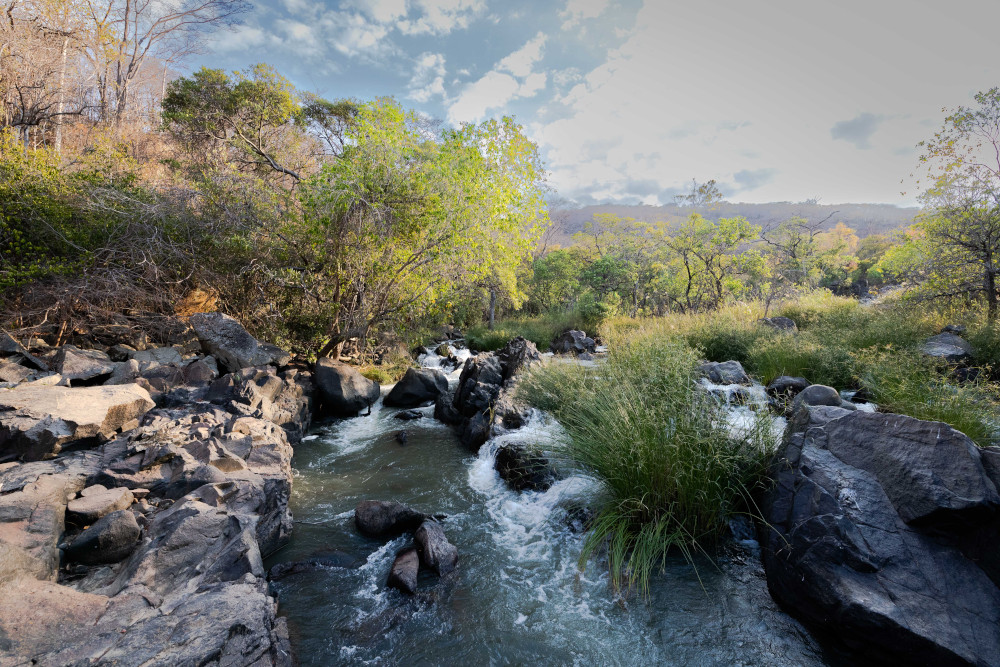
Idyllic Lufila Falls
The wilderness camp at Lufila Falls must be the best addition to the park accommodation. The campsite sits right on the water’s edge and you can safely swim in the river. Landscape photographers would want to stick around for a few golden hours. Facilities consist of only a long drop toilet. Water from the river is safe to drink and I wish we’d had more time to stay here.
There is an access road and viewpoint on the lower Lufila Falls a few kilometres away that would be a great place for a long lunch.
The temperature at this altitude is also decidedly more mild and pleasant than down at the Luangwa River. I am sure it can be cold here at times, but the weather was just perfect for us.
A sweet ending at Samala
The next day we made our way to Samala Camp, which is just outside the Mano Gate. The route remains challenging until you reach the old main road from Mano Gate. You keep gaining altitude as you make your way to the gate.
Samala is new and the only community camp in the area just outside the park boundary. The camp is situated along the Mwaleshi River, which is steep and rocky so high up on the escarpment. The tented chalets are laid out along the river, with the campground a few hundred metres away, also at the water’s edge. The setting makes for a very lovely campsite and you can swim in the river up here. The facilities are great and I would highly recommend staying here for a night or two.
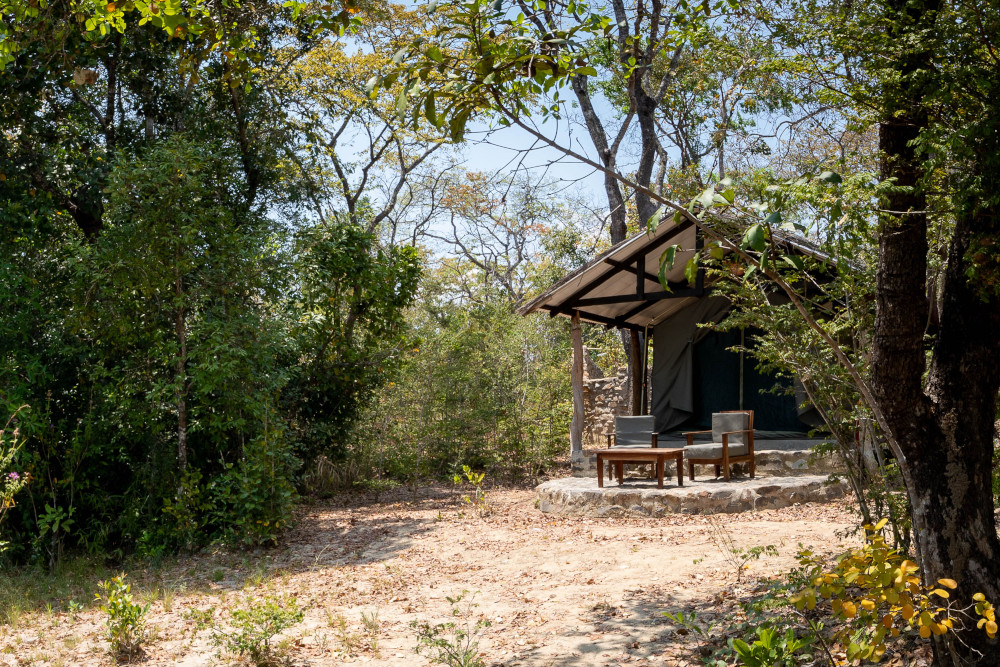
Our recce of the Amatololo Experience turned out to be too short as always. I am glad we made the effort to come and see it for ourselves. What a pleasant surprise that this mostly inaccessible park has now established a lovely wilderness route for the self-drive tourist looking for an off-the-beaten-track experience. I vowed to be back with my family.
A note about the Great North Road
Once you leave the park via Mano Gate, you are on a gravel road which is rough in places but not too bad. You reach the dreaded Great North Road about 40km north of the gate. From here we made our way to Kasanka National Park. The Great North Road has deteriorated quite a bit since I travelled on it in 2019. There are hundreds of trucks hauling fuel from Tanzania into Zambia and the road is in quite a bad state. If you are going to drive this road, take care, be patient and do not attempt to drive too far on one given day.
Also read: Kasanka, a magical migration moment
Zambia was again a wonderful destination and I hope to return again and again for years to come. There are so many hidden gems in this country waiting for the wild at heart to explore it.
The Tracks4Africa Zambia Self-drive Guide Book features everything you need to plan an overlanding trip to Zambia. It not only contains destination info and accommodation listings, but also trip planning advice and even suggested itineraries. The Zambia Paper Map offers a detailed overview of the country, with both minor gravel roads and off-road tracks marked. Get both together in the Zambia Travel Bundle and save.
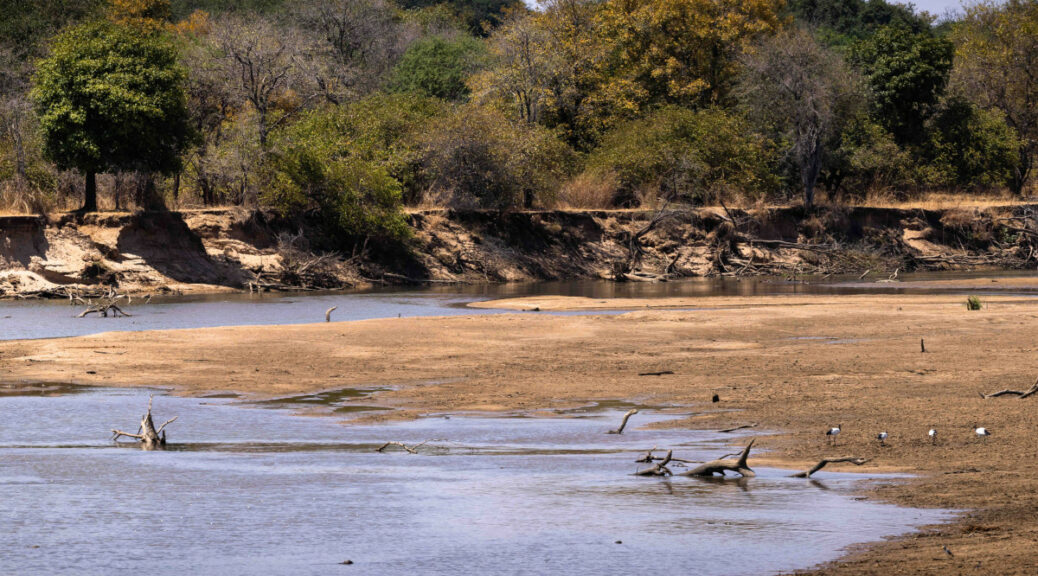

Great article well done. Just a thought I’d add another great spot for Overlanders on this route. Don’t forget the hidden gem, North Luangwa River Lodge and Camp, cheap camping right on the Luangwa River inside the park. A good staging point for your trip through the park, you can get meals and a cold beer. After the long drive North from Mfuwe, it’s a great place to recover before the rough road ahead.